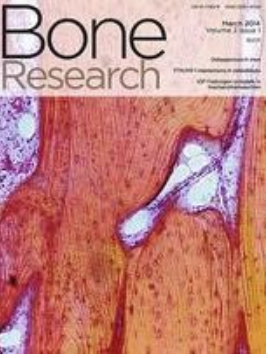骨关节炎的衰老微环境关注早期改变和靶向治疗。
IF 15
1区 医学
Q1 CELL & TISSUE ENGINEERING
引用次数: 0
摘要
骨关节炎(OA)是关节中最常见的退行性和与年龄相关的疾病之一,影响着全球6.54亿人。由于发病机制复杂,目前的治疗方法不能从根本上逆转OA的病理过程。尽管在过去的十年里,OA的机制已经被大规模地研究过,但OA病理与衰老相关的变化在很大程度上仍未被揭示。因此,深入分析OA的衰老微环境和衰老相关分子机制可能为临床预防和治疗提供额外的策略。在这篇综述中,我们从衰老相关变化的角度讨论了OA的潜在发病机制,并总结了OA关节衰老微环境的三个主要组成部分:免疫稳态失衡、细胞衰老和干细胞衰竭,这些微环境可能由衰老诱导并进一步加剧OA的进展。此外,强调免疫稳态失衡出现在确定的OA之前,它发生在早期阶段,是获得更好临床结果的治疗机会窗口。重要的是,我们评估了针对这些成分的最新治疗靶点和有希望的干预措施,以及OA患者精确和个性化治疗的挑战和前景,我们相信这将指导构建针对衰老相关因素的新型联合策略,以更好地治疗OA。本文章由计算机程序翻译,如有差异,请以英文原文为准。
Aging microenvironment in osteoarthritis focusing on early-stage alterations and targeted therapies.
Osteoarthritis (OA) is one of the most common degenerative and age-related diseases in joints, which affects 654 million people worldwide. Current therapies could not fundamentally reverse the pathologic process of OA due to the complex pathogenesis. Although OA mechanisms have been investigated on a large scale over the past decade, the OA pathology correlated with aging-associated changes is still largely unrevealed. Therefore, in-depth analysis of the aging microenvironment and aging-related molecular mechanisms in OA may offer additional strategies for clinical prevention and treatment. In this review, we discuss the potential pathogenesis of OA in light of aging-associated changes and summarize three main components of the aging microenvironment of the OA joint: immune homeostatic imbalance, cellular senescence, and stem cell exhaustion, which could be induced by aging and further exacerbate OA progression. Additionally, it is emphasized that immune homeostatic imbalance appears before established OA, which occurs in the early stage and is the therapeutic window of opportunity for better clinical outcomes. Importantly, we evaluate recent therapeutic targets and promising interventions against these components, as well as the challenges and prospects for precise and individualized therapies of OA patients, which we believe would guide the construction of novel combined strategies targeting aging-related factors against OA for better treatments in the future.
求助全文
通过发布文献求助,成功后即可免费获取论文全文。
去求助
来源期刊

Bone Research
CELL & TISSUE ENGINEERING-
CiteScore
20.00
自引率
4.70%
发文量
289
审稿时长
20 weeks
期刊介绍:
Established in 2013, Bone Research is a newly-founded English-language periodical that centers on the basic and clinical facets of bone biology, pathophysiology, and regeneration. It is dedicated to championing key findings emerging from both basic investigations and clinical research concerning bone-related topics. The journal's objective is to globally disseminate research in bone-related physiology, pathology, diseases, and treatment, contributing to the advancement of knowledge in this field.
 求助内容:
求助内容: 应助结果提醒方式:
应助结果提醒方式:


